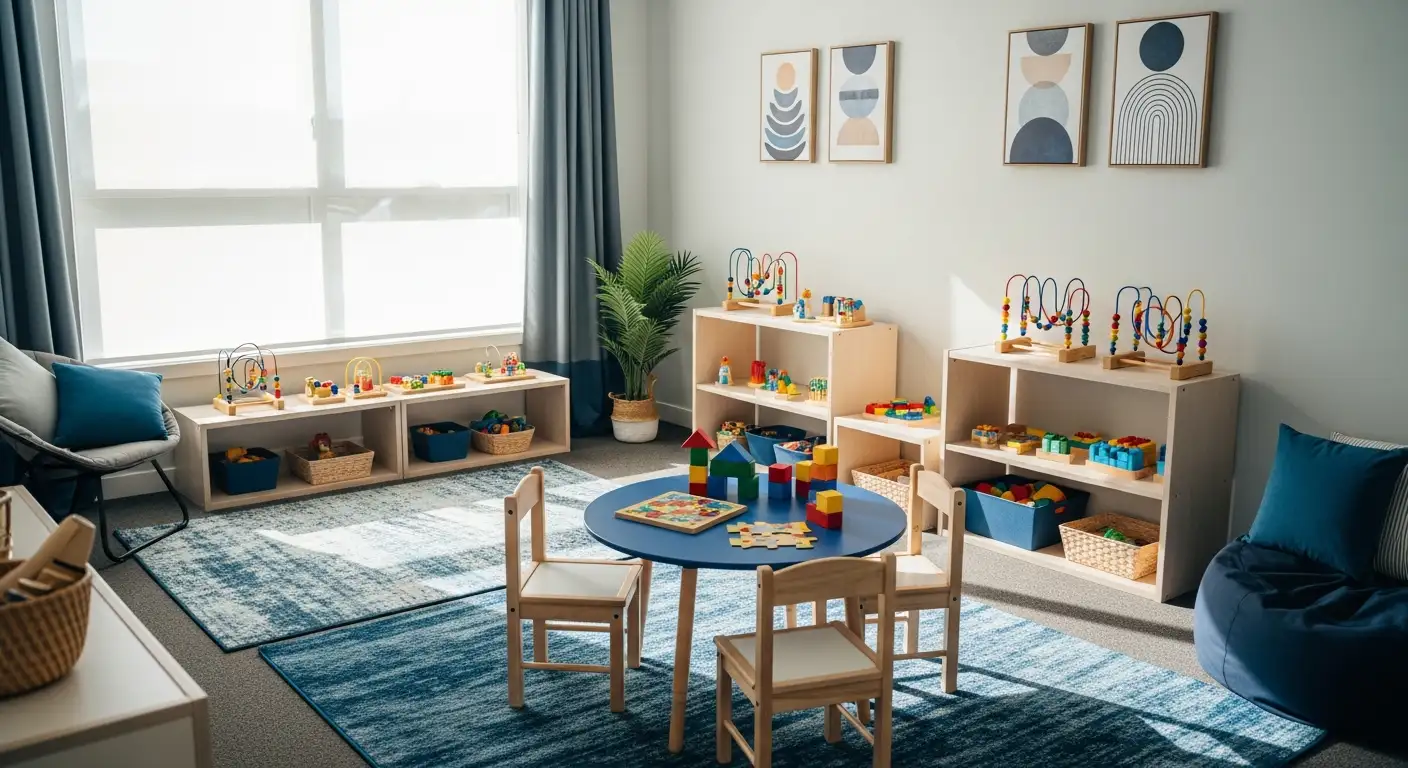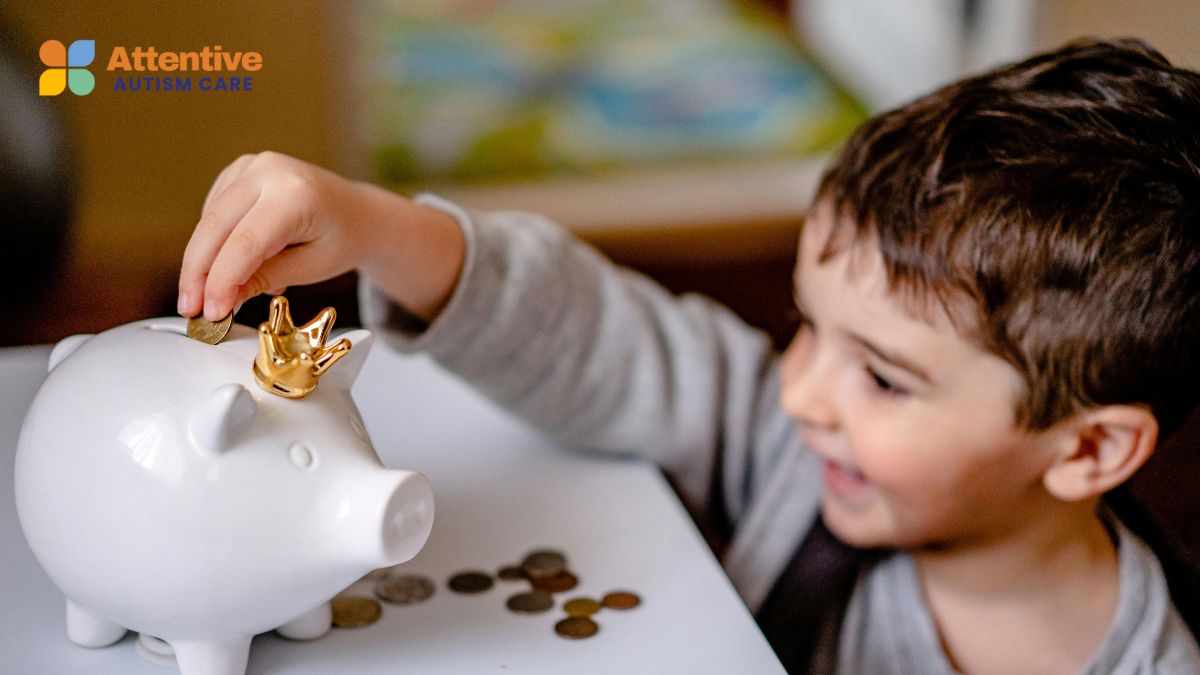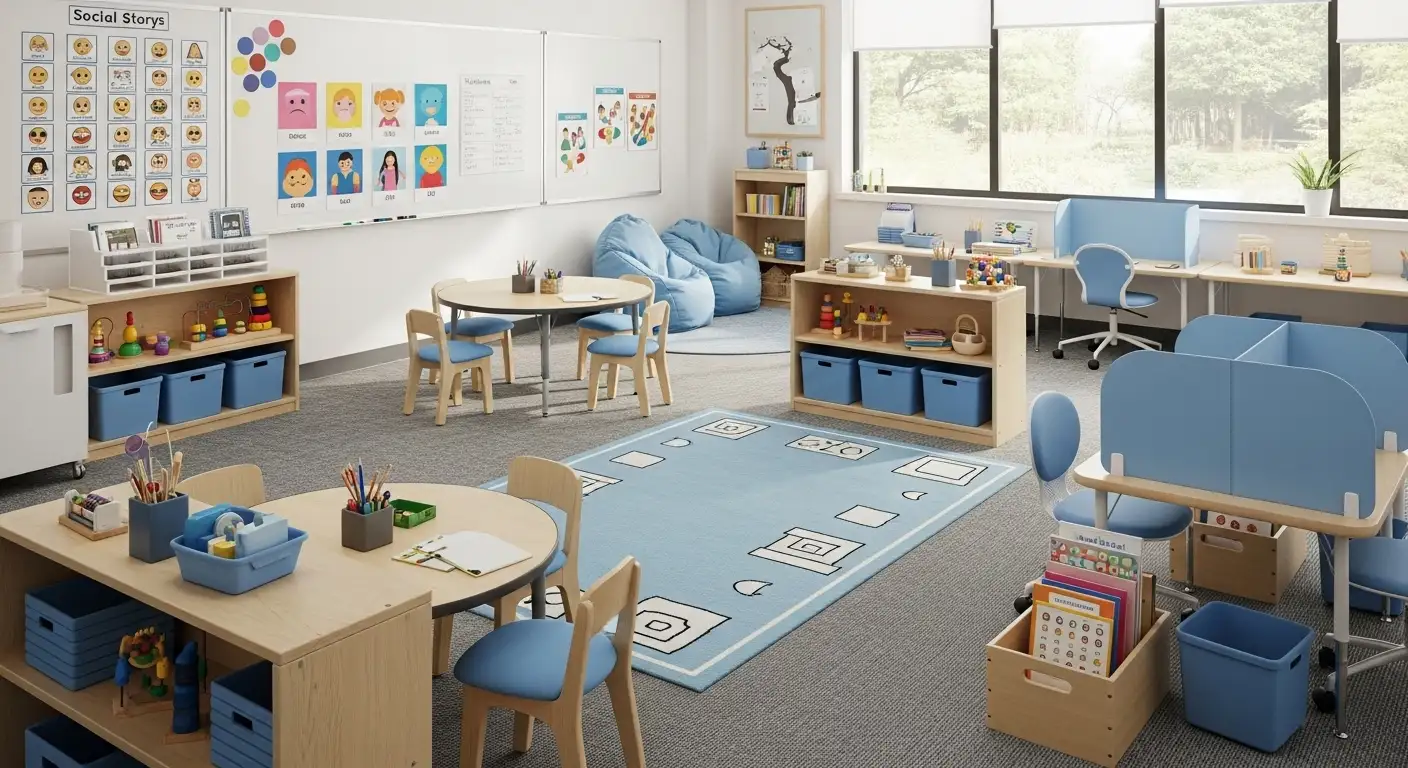Using Positive Reinforcement in Autism Behavior Plans
Enhancing Autism Therapy Through Positive Reinforcement

Understanding the Role of Positive Reinforcement in Autism Behavior Plans
The use of positive reinforcement has become a cornerstone in developing effective behavior plans for children with autism. By focusing on encouraging desirable behaviors rather than punishing negative ones, this approach fosters skill development, emotional growth, and long-term independence. This article explores the principles of positive reinforcement within autism therapy, highlighting its benefits, practical applications, and the professionals who implement these strategies to support children with autism spectrum disorder (ASD).
Applied Behavior Analysis: The Foundation of Autism Behavior Therapy
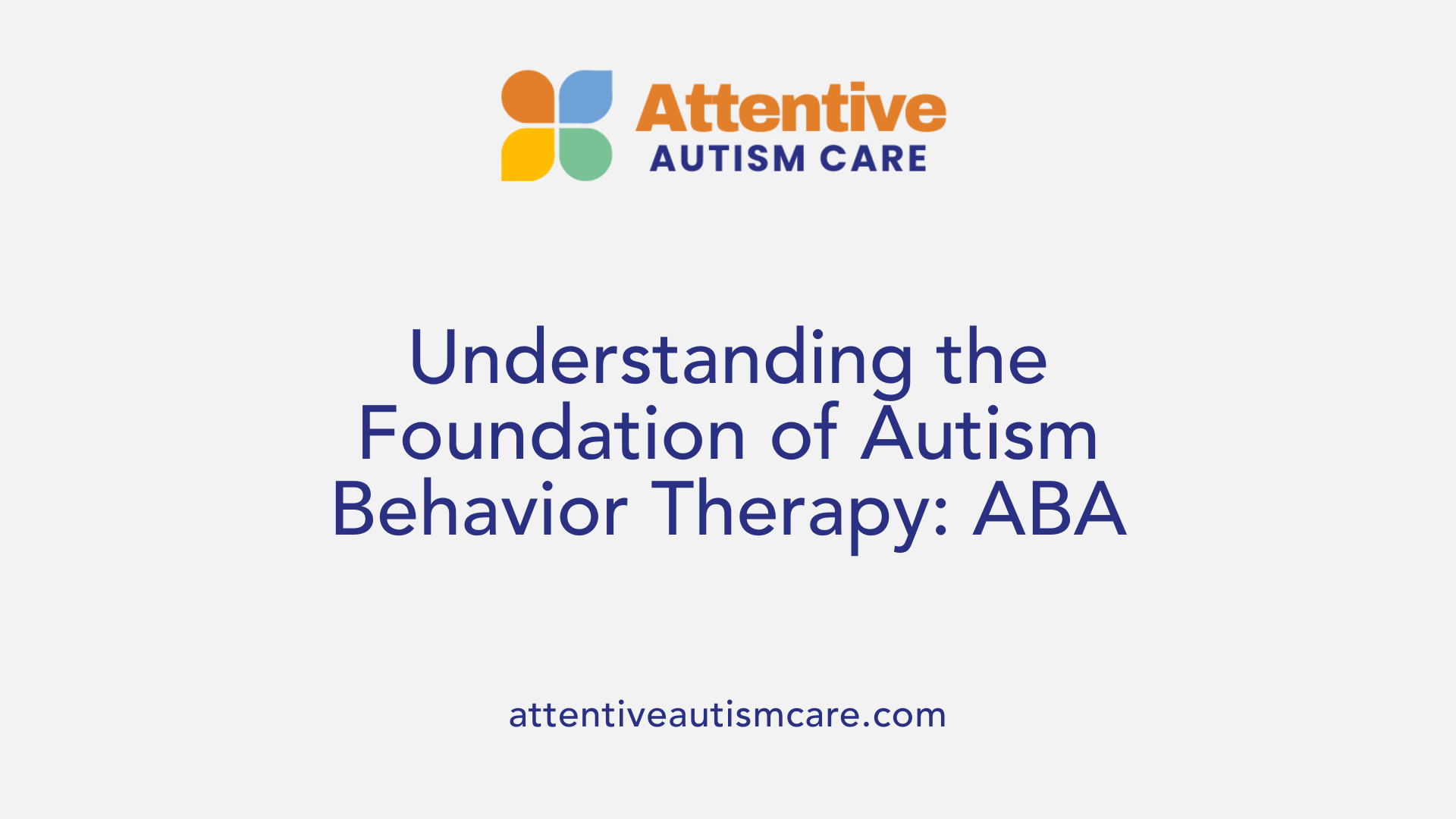
What is the therapy focusing on autism and behavioral analysis?
Applied Behavior Analysis (ABA) is a scientifically supported therapy designed to improve behaviors that are helpful and reduce those that interfere with learning and daily life in individuals with autism spectrum disorder (ASD). ABA applies principles of learning theory and operant conditioning, with a strong emphasis on positive reinforcement to encourage skill development.
How does ABA work in autism therapy?
ABA utilizes structured yet individualized programs that focus on communication, social skills, and daily living abilities. Therapists implement techniques such as Discrete Trial Training (DTT) and Pivotal Response Treatment (PRT) alongside naturalistic teaching strategies. These methods are delivered over multiple hours weekly and rely on frequent assessments and data tracking to tailor interventions to each child’s unique needs.
What techniques are used within ABA?
Positive reinforcement is central to ABA, involving the immediate addition of rewarding stimuli—like praise, favorite toys, or activities—right after a desired behavior to increase its recurrence. Reinforcement can be social (e.g., verbal praise), tangible (e.g., stickers), activity-based (e.g., extra playtime), or natural (e.g., getting an item asked for). ABA also employs different reinforcement schedules (continuous, fixed ratio, variable interval) to maintain and strengthen behaviors over time.
How individualized is ABA treatment?
ABA programs are highly personalized, making use of ongoing data collection to adjust goals and strategies. Therapists devise treatment plans based on functional skills important to the child’s everyday life and focus on outcomes that foster independence and quality of life. This customization ensures that therapy is relevant and effective for each child.
What evidence supports ABA’s effectiveness?
ABA is widely acknowledged by health authorities as an evidence-based best practice for autism therapy. Research consistently shows that ABA improves communication, focus, and social engagement while reducing problematic behaviors. Positive reinforcement, at the core of ABA, is validated by studies demonstrating its ability to promote learning and desired behavior changes without the drawbacks that punishment-based strategies can cause.
Key Providers of Autism Behavioral Therapy
Who typically provides therapy focused on autism and behavioral analysis?
Therapy for autism spectrum disorder (ASD) using behavioral analysis is mainly delivered by trained professionals such as Board Certified Behavior Analysts (BCBAs), Board Certified Assistant Behavior Analysts (BCaBAs), and Registered Behavior Technicians (RBTs). These individuals specialize in Applied Behavior Analysis (ABA), an evidence-based approach that scientifically guides behavior modification.
What qualifications and certifications do these professionals hold?
- BCBAs: Hold graduate degrees and have completed rigorous training in behavioral science. They design and oversee therapy programs.
- BCaBAs: Assist BCBAs and have intermediate certification.
- RBTs: Provide direct therapy under supervision, often with specialized training but not at the certification level of BCBAs.
Where is therapy typically provided?
These providers work in a variety of settings including specialized clinics, schools, community centers, and sometimes in the child's home. The environment is selected to best fit the child’s individual needs and maximize learning opportunities.
What role do families play in therapy?
Families are essential partners in therapy, helping to reinforce skills learned during sessions and ensuring consistent application in daily life. Their involvement supports generalization of positive behaviors and fosters a supportive home environment.
How do providers ensure ethical and evidence-based practice?
Qualified therapists adhere to strict ethical guidelines and utilize practices supported by scientific research. Positive reinforcement, a core ABA strategy, is favored for being a respectful and effective method that promotes skill development and confidence rather than relying on punishment-based approaches.
This collaborative and professional approach ensures that children with autism receive personalized and effective behavioral interventions that support their growth, independence, and well-being.
Principles and Benefits of Positive Reinforcement in Autism Plans
What is Positive Reinforcement and How Does It Work?
Positive reinforcement involves adding a desirable stimulus immediately after a child displays a positive behavior. This could be praise, a favorite toy, or access to a preferred activity. The goal is to increase the likelihood that the behavior will happen again. In autism therapy, especially Applied Behavior Analysis (ABA), this approach targets specific behaviors by rewarding children promptly, motivating them to repeat those actions.
How Does Positive Reinforcement Promote Behavior Change?
By focusing on rewarding what a child does right, positive reinforcement encourages them to continue positive behaviors rather than reacting to negative actions. This strategy can effectively lessen unwanted behaviors by emphasizing and reinforcing desirable ones. Various reinforcement schedules, such as continuous or variable reinforcement, help maintain and strengthen these behavior changes over time.
Benefits for Communication, Social, and Daily Living Skills
Positive reinforcement supports the development of key skills in communication, social interaction, and daily living. For example, praising a child for using sign language or completing a task builds their abilities in a supportive way. This method also encourages emotional regulation and helps children engage more socially.
Effects on Confidence and Emotional Resilience
When children experience frequent success through positive reinforcement, it boosts their self-esteem and confidence. This creates a motivating environment where they feel capable and valued. Moreover, reinforcing positive behavior fosters emotional resilience, helping children recover effectively after challenging moments.
Why Positive Reinforcement is Preferred Over Punishment
Compared to punishment strategies—like removing privileges to reduce unwanted behaviors—positive reinforcement is less intrusive and more effective. It avoids negative long-term effects and emphasizes skill-building. By promoting intrinsic motivation, it lays the groundwork for lasting behavioral change and independence.
Types of Reinforcers Used in Autism Therapy
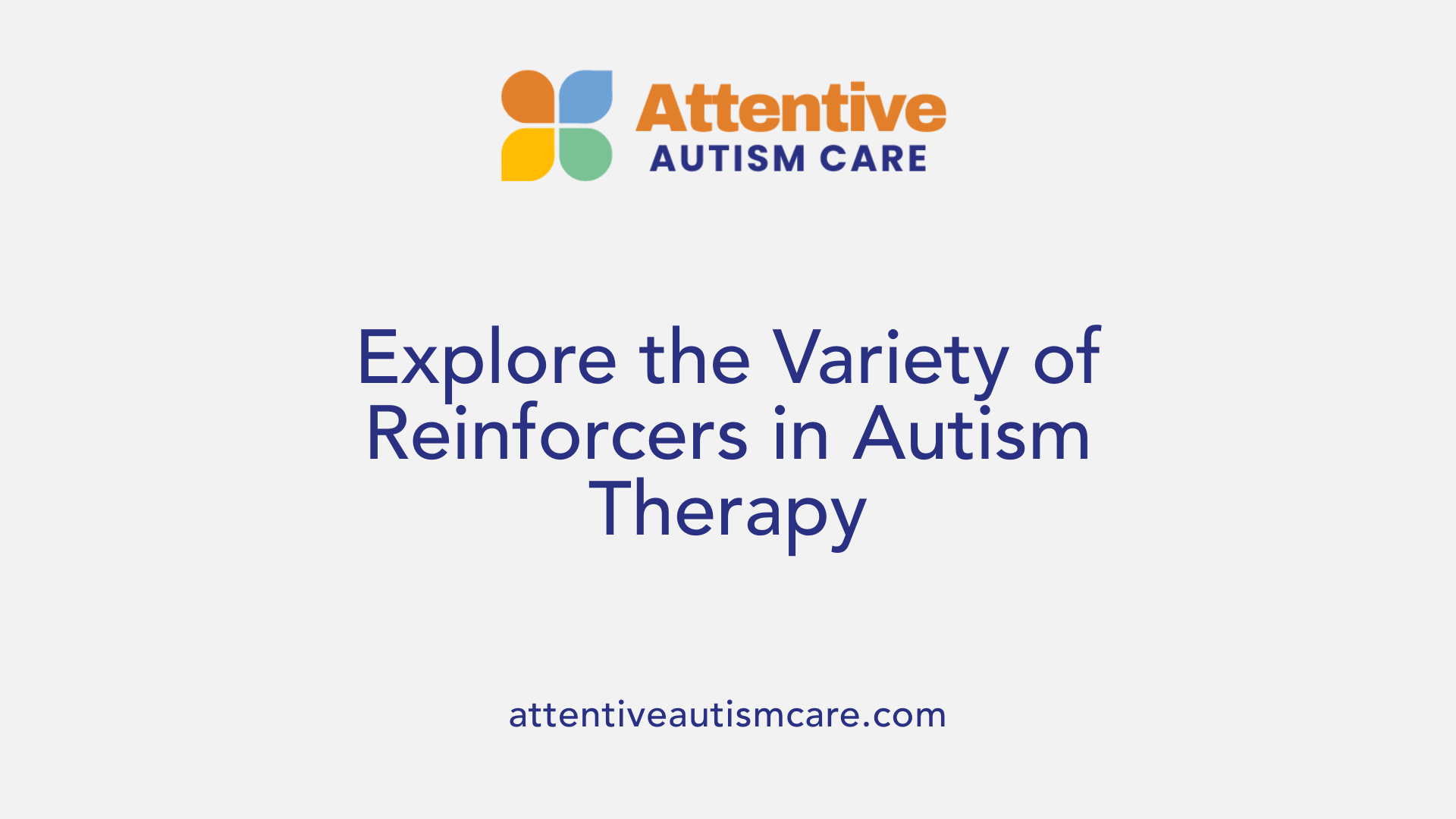
Social Reinforcers
Social reinforcers are common in autism therapy and include praise, physical affection, and attention. These reinforcers directly reinforce positive interactions and help strengthen social skills. For example, giving verbal praise or a high-five can motivate children to repeat desired behaviors.
Tangible Reinforcers
These include toys, stickers, or other preferred objects that the child values. Tangible reinforcers are useful for encouraging new skills or behaviors by providing immediate rewards. For instance, a child might receive a sticker for completing a task, supporting motivation.
Food Reinforcers and Their Thoughtful Use
Food can be a powerful reinforcer, especially during early learning or challenging transitions. Healthy snacks or treats are selected carefully to avoid overuse and maintain balance. Food reinforcers should always complement, not replace, other reinforcement types.
Activity-Based Reinforcers
Activities such as extra playtime, screen time, or creative projects serve as rewarding experiences. These reinforcers provide enjoyable outcomes contingent on positive behavior and are effective for children who prefer active engagement.
Balancing Different Reinforcer Types for Effectiveness
Using a variety of reinforcers helps sustain motivation and addresses individual preferences. Combining social, tangible, food, and activity-based reinforcers creates a rich, supportive environment that encourages skill development and positive behavior consistently.
Implementing Reinforcement Schedules for Effective Behavior Change
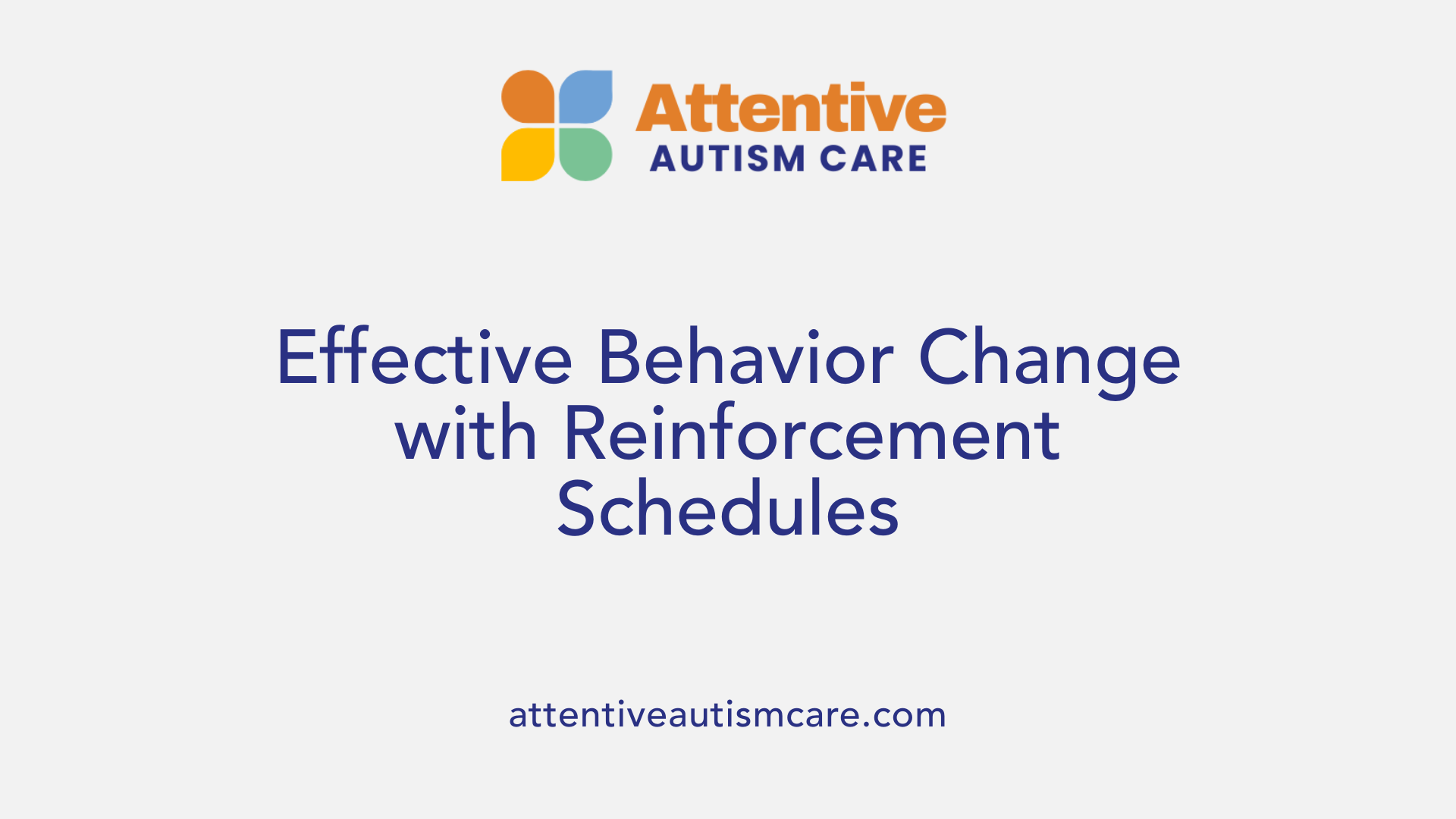
Continuous and Intermittent Reinforcement
In teaching autistic children, continuous reinforcement means providing a reward immediately after every desired behavior. This approach is especially useful during the initial stages of learning new skills, as it helps the child quickly associate the behavior with positive outcomes. Once the behavior becomes more established, intermittent reinforcement—rewarding the behavior only some of the time—is introduced to maintain the behavior and prevent dependency on constant rewards.
Fixed Ratio, Fixed Interval, Variable Ratio, and Variable Interval Schedules
Different reinforcement schedules help tailor behavior strategies to meet individual needs:
- Fixed Ratio: Rewards are given after a set number of correct responses (e.g., a sticker after every five tasks completed).
- Fixed Interval: Rewards follow the first correct response after a fixed amount of time (e.g., praise every 10 minutes of focused attention).
- Variable Ratio: Rewards are given after an unpredictable number of responses, which encourages high and steady response rates.
- Variable Interval: Rewards come after varying time intervals, promoting consistent behavior over time.
These schedules can enhance motivation and adapt to the fluctuating needs of the child.
Immediate Reinforcement Importance in ABA
Applied Behavior Analysis (ABA) emphasizes delivering reinforcement immediately after the desired behavior. Immediate rewards strengthen the connection between the behavior and its positive consequence, boosting motivation to repeat the behavior. For example, praising a child right after they use sign language helps solidify this communication skill.
Phasing Out Reinforcement Towards Natural Rewards
As behaviors stabilize, reinforcement is gradually reduced and natural reinforcements take over. Natural reinforcements are the intrinsic, real-world benefits of the behavior, like earning a sense of accomplishment or gaining social acceptance. Phasing out artificial rewards fosters independence and internal motivation, ensuring long-term behavior change.
Using Reinforcement to Target Specific Behaviors
ABA therapy uses positive reinforcement to encourage very specific behaviors such as remaining seated during meals or asking permission before using electronic devices. Tailoring reinforcement—through praise, tangible rewards, or preferred activities—supports skill mastery and helps address particular challenges.
| Reinforcement Schedule | Description | Benefit |
|---|---|---|
| Continuous | Reward every correct behavior | Quick learning of new skills |
| Fixed Ratio | Reward after a set number of behaviors | Encourages repetitive task completion |
| Fixed Interval | Reward after set time following behavior | Builds patience and sustained effort |
| Variable Ratio | Reward after unpredictable number of behaviors | Maintains high and steady response rates |
| Variable Interval | Reward after varying time periods | Promotes consistent behavior with less predictability |
Positive Reinforcement's Role in Reducing Unwanted Behaviors

How Focusing on Positive Actions Minimizes Negative Behaviors
Positive reinforcement emphasizes recognizing and rewarding desirable behaviors rather than punishing unwanted actions. By giving praise, small rewards, or access to preferred activities immediately after a positive behavior, children with autism are motivated to repeat those actions. This approach reduces reliance on negative responses and helps diminish problematic behaviors naturally over time.
Comparison with Negative Punishment and Reinforcement
Unlike negative punishment, which involves removing a pleasant stimulus (e.g., taking away a toy to reduce hitting), positive reinforcement adds a favorable stimulus after good behavior to encourage it. Negative reinforcement removes an unpleasant stimulus to increase behavior, but positive reinforcement is often preferred because it creates a supportive, motivating environment without aversive elements. This makes positive reinforcement less intrusive and more effective for long-term learning.
Examples of Effective Use in Daily Situations
In practical settings, positive reinforcement may include praising a child for using sign language, giving stickers for completing tasks, or offering extra playtime when they cooperate. For example, a child who remains seated during meals might receive verbal praise or a preferred snack, reinforcing peaceful behavior. These strategies teach children the value of positive actions by linking behavior with immediate, enjoyable outcomes.
Long-Term Behavioral Change through Positive Emphasis
Consistent use of positive reinforcement builds confidence and self-esteem by providing frequent successful experiences. Over time, desired behaviors become more consistent and intrinsic motivation develops. Reinforcement schedules can be gradually adjusted or phased out, shifting toward natural rewards. This promotes emotional resilience, social engagement, and greater independence, laying the foundation for lasting behavioral improvement in children with autism.
Promoting Independence and Emotional Regulation Through Reinforcement

How does positive reinforcement aid skill mastery and independence in autistic children?
Positive reinforcement is essential in helping children with autism achieve skill mastery and increased independence. By rewarding desired behaviors immediately—such as completing tasks or using communication skills—children gain frequent successes that boost confidence and build essential life skills. Over time, this continuous encouragement supports the development of daily living abilities, enabling children to perform activities more autonomously.
In what ways does reinforcement support emotional regulation and meltdown recovery?
Reinforcement strategies encourage emotional resilience by focusing on positive behavior rather than negative responses. Children learn to manage their emotions effectively, and reinforcement helps them recover from meltdowns by promoting calming behaviors and coping skills. For example, praising a child for using a calming strategy reinforces emotional regulation and reduces the occurrence of challenging behaviors.
How is intrinsic motivation encouraged through reinforcement?
Initially, external rewards such as praise, toys, or preferred activities motivate children. Through consistent reinforcement, children develop internal satisfaction from their achievements, fostering intrinsic motivation. Eventually, reinforcement can shift towards natural rewards—like enjoying a finished project or social interaction—encouraging behaviors to continue without constant external prompting.
What role does reinforcement play in building resilience and social engagement?
Reinforcing social behaviors through praise, high-fives, or shared activities nurtures social engagement and helps children build meaningful relationships. This positive focus cultivates resilience by promoting repeated social successes, increasing the child’s willingness to interact and respond adaptively in social settings. Reinforcement effectively creates an encouraging environment where emotional growth and social skills can flourish.
Common Misconceptions and Scientific Support for Positive Reinforcement
Clarifying misconceptions about bribery vs reinforcement
Positive reinforcement is often misunderstood as bribery; however, they are fundamentally different. Positive reinforcement involves delivering a desirable stimulus immediately after a desired behavior to encourage its recurrence. Unlike bribery, which implies manipulation without an educational purpose, positive reinforcement is a scientifically validated strategy aimed at teaching and strengthening specific positive behaviors in children with autism.
Empirical evidence supporting ABA and positive reinforcement
Applied Behavior Analysis (ABA) therapy, a widely recognized and effective method for individuals with autism spectrum disorder (ASD), heavily incorporates positive reinforcement. Research has consistently shown that this approach improves communication skills, enhances attention and focus, and reduces undesirable behaviors. Positive reinforcement in ABA uses methods such as verbal praise, offering preferred items, or engaging children in favored activities, all tailored to individual preferences.
Effectiveness in improving communication, focus, and behavior
Positive reinforcement’s ability to reward behaviors like using sign language, remaining seated during meals, or asking permission, demonstrates its versatility and impact. By reinforcing such behaviors immediately, it motivates children and helps build essential skills. Over time, positive reinforcement encourages independence, emotional regulation, and social engagement, leading to sustained positive behavioral changes.
Importance of individualized, evidence-based approaches
Effective use of positive reinforcement requires careful individualization. Different children respond uniquely to various reinforcers, including social praise, tangible rewards, activity-based incentives, or even safe and healthful food treats. Behavioral interventions are continuously adapted based on empirical data to optimize outcomes for each child. This personalized, evidence-based application helps dispel myths and confirms positive reinforcement as an ethical, effective tool in autism therapy.
The Transformative Impact of Positive Reinforcement in Autism Therapy
Positive reinforcement stands as a pivotal strategy in autism behavior plans, enabling children to develop vital skills and overcome challenges with encouragement and support. Through structured, individualized approaches within ABA therapy, positive reinforcement not only cultivates desirable behaviors but also fosters confidence, independence, and resilience. Delivered by skilled professionals, this therapy continues to shape the lives of children with autism, providing a foundation for lifelong growth and well-being. Recognizing its empirical backing and practical benefits empowers caregivers and practitioners alike to embrace positive reinforcement as an essential tool in autism behavioral interventions.
References
- Positive Reinforcement Autism: Effective Strategies for ...
- How Do Reinforcement, Negative Punishment, and Autism ...
- Positive Reinforcement in ABA Therapy
- Applied Behavior Analysis (ABA): Revealing Positive ...
- Applied Behavior Analysis (ABA)
- Applied Behavior Analysis (ABA)
- Applied Behavior Analysis in Children and Youth with Autism ...
- The Controversy Around ABA
- Applied behavior analysis


























